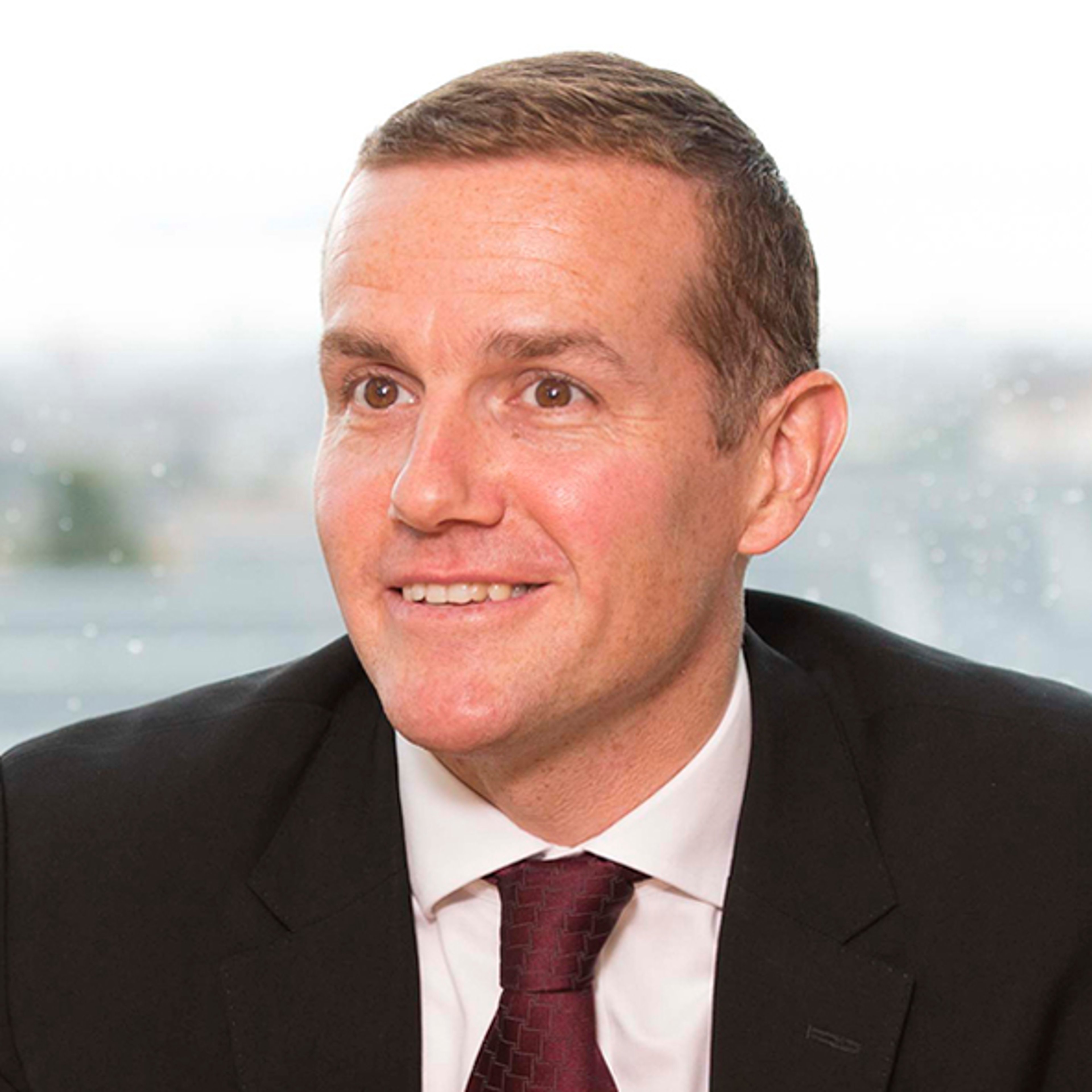
All investment strategies have the potential for profit and loss, your or your clients’ capital may be at risk.
A thoughtful solution for climate-conscious investors
If sustainability matters to you, it matters across all your investments. Baillie Gifford’s pioneering Sustainable Multi Asset Fund applies its sustainability approach flexibly across the widest range of asset classes available to us.
The urgent pace of climate change has thrust sustainability into the spotlight, capturing the attention of investors worldwide. Many are seeking to align their portfolios with their values, addressing their own concerns, and for pension funds those of their members.
At Baillie Gifford, we believe that this shift towards sustainable investing is firmly in keeping with our fiduciary responsibility. It can in fact be a powerful complement, paving the way for a more responsible and prosperous future.
It is increasingly clear that we don’t have to limit investment growth to limit carbon. However, if we don’t limit carbon, we will limit long-term growth.

A pioneering and holistic strategy...
There are plenty of environmental, social and governance (ESG)-oriented equity strategies.
But this does not go far enough – the investment world is far broader than the equity market, and investors should have the option to employ a consistent sustainability thread through all their investments.
Baillie Gifford’s Sustainable Multi Asset Fund is pioneering the incorporation of sustainable investing criteria within a multi-asset investment approach.
We invest across the broadest opportunity set of asset classes, seeking the best available investments for our actively-managed fund. We see no need to compromise by excluding whole asset classes, geographies, or sectors.
Our multi-asset investment managers, together with our dedicated ESG team, are tasked with assessing portfolio holdings for their sustainability criteria. They use a materiality framework based on the Sustainable Finance Standards Board’s materiality framework, a globally accepted accounting and sustainability disclosure standard.
Over the following pages we set out some of the key reasons why we believe investors can use their multi-asset allocations to support their sustainable investment goals, and why we hope you’ll consider Baillie Gifford for that exposure.
...with a meaningful additional objective
We have designed a unique and challenging second objective for the Fund that is equally weighted alongside the risk and return targets. This climate-focused objective is a declining upper limit to the portfolio’s carbon footprint, set in absolute, real-world terms.
It is not about minimising the carbon footprint to keep it below that of an arbitrary market index. We want actual year-on-year progress that allows space for the improvers – those investments that may not have the lowest carbon footprint today, but which we see making a significant contribution to reducing the global carbon footprint over the coming years.
Three real world objectives
The world is far bigger than the equity market
Listed equities has traditionally been the most straightforward, high-profile, and impactful asset class for applying ESG principles.
However, many investors might have far more of their capital allocated to other asset classes. These other investment areas make up enormous parts of the global economy. They are crucial components of societal progress, especially in areas such as technological innovation, and will influence many of the most important policy decisions of the coming decades.
There is a wealth of investment opportunities in fixed-income markets, both corporate and sovereign, in commodities, real estate, infrastructure and insurance-linked securities, among others. The arena for ESG has broadened and deepened – our Sustainable Multi Asset Fund applies ESG thinking and assessment to all its investments across the widest range of asset classes available to us.
Sustainability considerations across a broad multi-asset portfolio
The onus is on portfolio managers, working closely with the embedded ESG analysts, to ensure the portfolio’s sustainability, rather than relying on excluding whole asset classes or sectors at the outset.
Baillie Gifford’s long-term top-down investment approach is blended with a consistent bottom-up assessment framework, meaning we consider both macroeconomic and company-specific factors.

Broad opportunity set and sustainability examples
Key pillars of sustainability
Climate objective
- Commitment to maintain the portfolio’s carbon footprint below a carbon budget which declines annually
- Manage exposures to highest carbon emitters
Sustainability assessment
- Exclusion of investments deemed ‘unsustainable’
- Categorising holdings as Adapting, Neutral, Enabling and Leader to prioritise engagement
Screening
- Revenue-based restrictions to exclude investments based on fossil fuels, tobacco and armaments
- Norms-based restrictions to exclude investments noncompliant with United Nations Global Compact or sanctioned by United Nations Sanctions Council
Enhanced engagement
- Targeted milestones set for investments, driven by sustainability assessments
- Thematic structured engagement with portfolio holdings on relevant ESG topics
Generation of strong, stable and sustainable returns
Launched in May 2022, the Sustainable Multi Asset Fund is designed to be aligned with, promote, and benefit from the global move to a more sustainable future. This goal drives our asset allocation, portfolio implementation and engagement actions that are key to real-world change on a forward-looking basis.
The carbon budget objective is just one way to achieve this. Another is our genuine belief that we can manage a portfolio that delivers on these sustainable credentials without compromise on investment outcomes.
As well as being aligned with the requirement to mitigate the impacts of climate change, the Fund is well aligned with the most significant investment themes of the rest of our lives: technological advances, increasing automation, and changing geopolitics.
And, being a true multi-asset portfolio, it can flexibly express these big themes. The opportunity set is vast, giving lots of scope to find great ways to generate strong, stable, and sustainable returns for investors over the coming decade and beyond.
More information can be found by visiting bailliegifford.com/sustainable-multi-asset

Risk factors
The views expressed should not be considered as advice or a recommendation to buy, sell or hold a particular investment. They reflect opinion and should not be taken as statements of fact nor should any reliance be placed on them when making investment decisions. This communication was produced and approved in October 2023 and has not been updated subsequently. It represents views held at the time of writing and may not reflect current thinking.
This communication contains information on investments which does not constitute independent research. Accordingly, it is not subject to the protections afforded to independent research, and Baillie Gifford and its staff may have dealt in the investments concerned.
All information is sourced from Baillie Gifford & Co and is current unless otherwise stated.
The images used in this communication are for illustrative purposes only.
The Baillie Gifford Diversified Growth Fund and the Baillie Gifford Multi Asset Growth Fund are collective investment schemes managed by Baillie Gifford & Co Limited. They do not guarantee positive returns. They aim to limit the extent of loss in any short-term period to a lower level than equities.
The value of your investment can be affected by changing conditions in the markets in which the Fund invests. The value of the Fund can go down as well as up so you may not get back what you originally invested.
Under certain market conditions some of the holdings in the Fund may be difficult to buy or sell and even small purchases and sales may cause their prices to move significantly. In addition, the difference between the prices for buying and selling some holdings may be wide and variable resulting in higher costs for the investor. A limited proportion of the Fund may be held in monthly and weekly dealt funds. Baillie Gifford & Co and Baillie Gifford & Co Limited are authorised and regulated by the Financial Conduct Authority. Baillie Gifford & Co Limited is an Authorised Corporate Director of OEICs.
Ref: 77112 10040632







